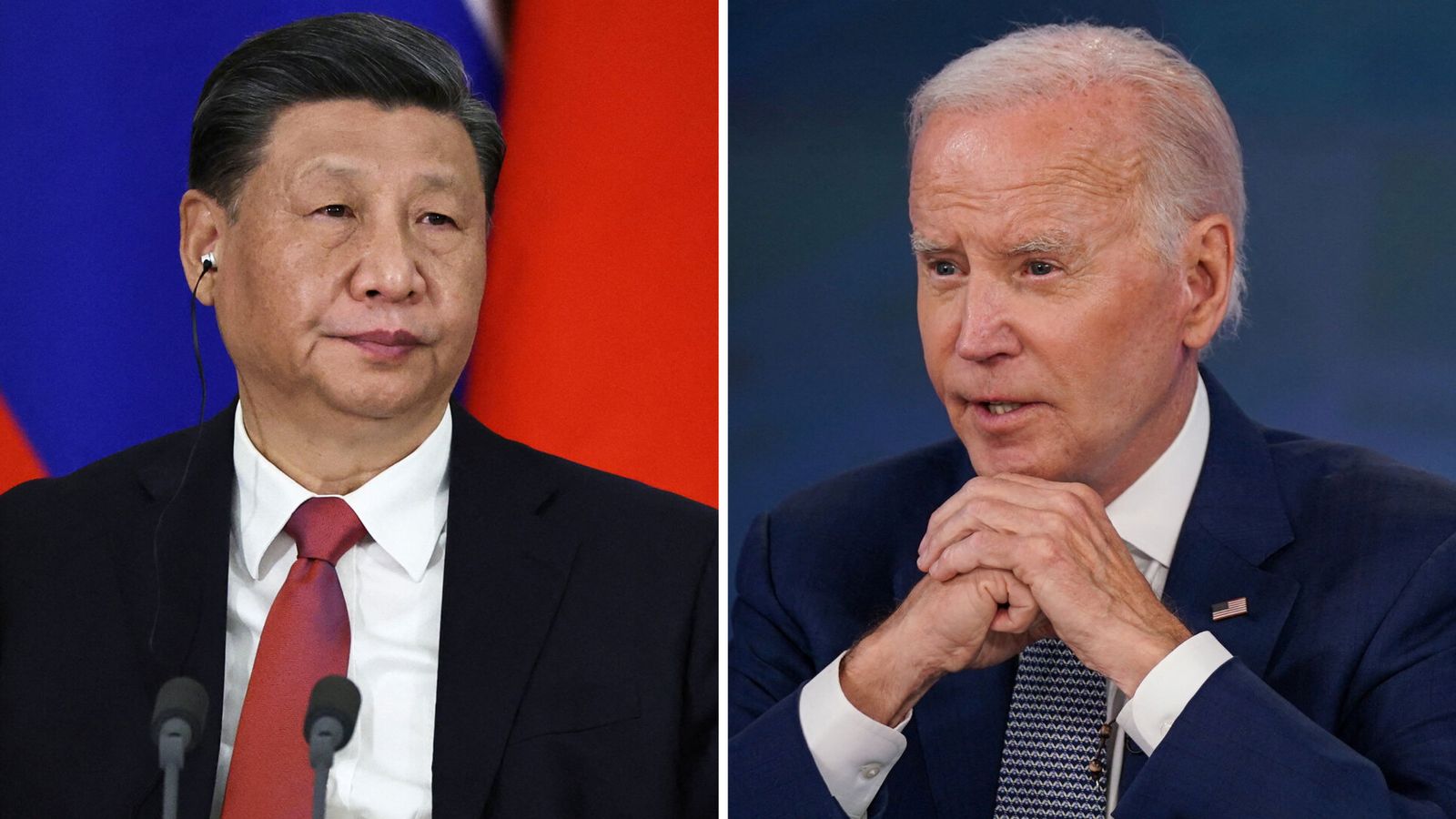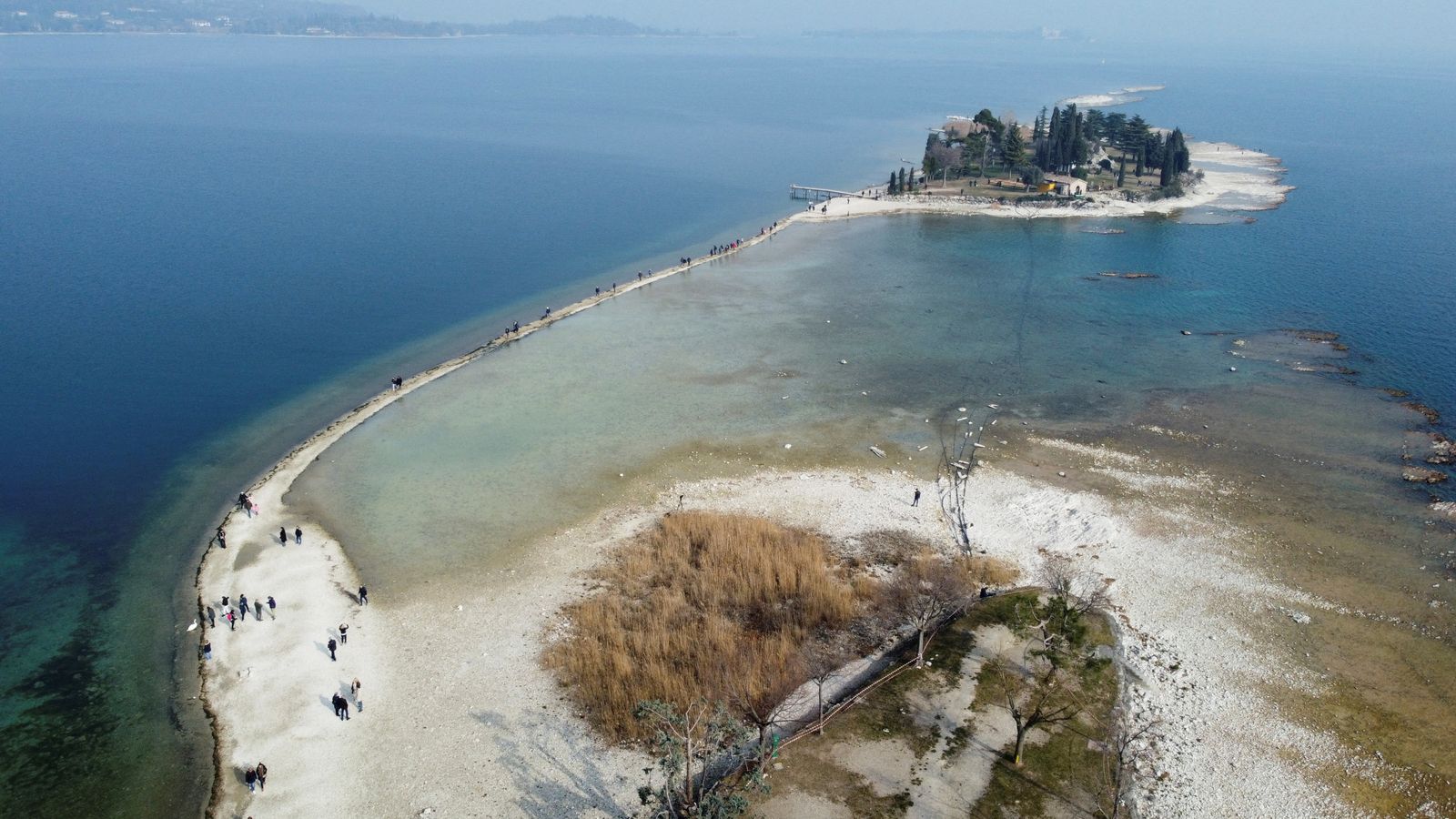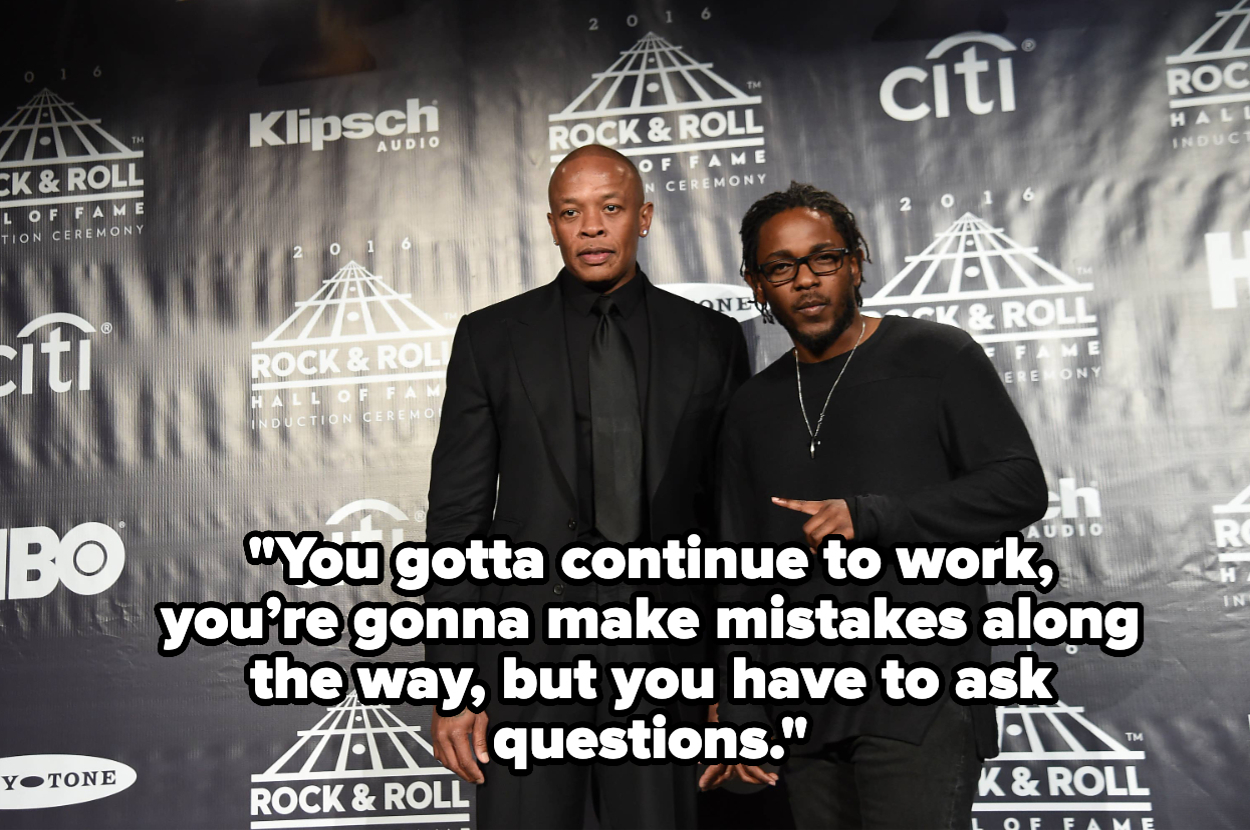It has been a year since President Xi and President Biden last met, and it’s hard to overstate just what a rollercoaster US-China relations have been on since then.
The fact this meeting is happening at all is the result of months of delicate planning.
But for all the “tough-line”, “hard-man” images that both men try to broadcast domestically, there is a mutual recognition of one key fact: it would cost more, both politically and economically, to allow relations to spiral.
Why now?
It was just nine months ago that US-China relations hit what felt like rock bottom as the so-called Chinese spy balloon was shot down over the US, plunging their diplomacy into crisis.
Please use Chrome browser for a more accessible video player
The vast backdrop of disagreements from Taiwan, the Indo-Pacific, the Ukraine war, tech controls and economic sanctions meant the relationship felt as precarious and as dangerous as it had in decades.
But the summer has seen a blitz of diplomatic efforts to try to repair things, with multiple meetings of officials at various levels.
China returns to deflation as economy faces challenges on many fronts
Cliff face shop in China’s Hunan province dubbed ‘inconvenient convenience store’
Seafood sold in UK supermarkets may have a dark side – here’s why
Both sides know the window for progress is narrow.
Come next year, Taiwan’s presidential election will likely inflame tensions, and then the inevitable anti-China sentiment that will accompany the US election cycle will no doubt make things worse.
The time to play statesmen and to push for their interests is now!
Be the first to get Breaking News
Install the Sky News app for free
What do they want?
Don’t be under any illusion, both Biden and Xi are coming to this table with immense amounts of scepticism about the other’s intentions.
Any meaningful breakthrough is highly unlikely.
What they both seek is a degree of what’s being called “tactical stabilisation” – a pause in deterioration that will allow each to pursue its interests in a more predictable environment.
On the US side, there is an understanding that only a meeting of the top men will unlock the Chinese system to enable cooperation on some of the “easier” issues like climate change and global health.
There is also a hope that military-to-military talks might be able to restart after being shut down following former Speaker Nancy Pelosi’s controversial visit to Taiwan last year.
From China’s perspective, a pause in deterioration gives it the space to continue to build up its economic and military strength to better compete going forward.
The visuals are also important to Xi Jinping domestically.
It has not been a brilliant year for him, with a chaotic end to his hated zero COVID policy, a faltering economy and deteriorating relations with multiple western countries. Being seen to be able to manage this crucial relationship is important to casting himself as a competent statesman.
So what will they discuss?
There are so many disagreements likely to be raised, but these are the top three on the list:
Please use Chrome browser for a more accessible video player
Territorial claims and military tension
Perhaps top of the long list of issues between them is China’s increasingly assertive behaviour in contested areas that it claims as its own.
Most prominent is Taiwan, the self-governing island that China sees as a breakaway province. Xi has expressed multiple times his desire to “reunify” Taiwan, Biden has promised to defend it.
The other arena where tensions are rising is the South China Sea.
China claims the vast majority as its international waters, despite rival claims from the Philippines and others. In 2016, an international arbitral tribunal ruled overwhelmingly in favour of the Philippines.
However, in recent months there have been frequent confrontations between Chinese and Filipino vessels, and here too the US has reiterated its commitment to support the Philippines.
Please use Chrome browser for a more accessible video player
The US claims that in both areas China’s behaviour is becoming increasingly aggressive and, in some cases dangerous. It has released videos of Chinese jets flying hair-raisingly close to US ones, in one recent case, just 10ft away.
The Americans say the risk of accidents and escalation is grave.
China, for its part, says that it is US conduct that is the dangerous force. It sees American presence in these regions as blatant provocation in its backyard.
These are deeply intractable issues, the best that might be hoped for is some sort of agreement to an offramp for if things ever escalate.
Global conflicts
The two leaders will also discuss the two major ongoing global conflicts in Ukraine and the Middle East.
In both, they have taken a drastically different tact.
When it comes to Ukraine, China has attempted to portray itself as a neutral peacemaker, one of the only nations with the ability to talk to both sides.
The reality, though, is that Xi has made no secret of his growing closeness to Putin and has quietly been providing Russia with finance, technology and diplomatic cover.
Meanwhile, in the Middle East, it has called for a ceasefire and peace, but it has stopped short of directly condemning Hamas for the 7 October atrocities and state media has taken a decidedly pro-Palestinian tone.
In both cases, China’s approach is in stark opposition to America’s, and it has criticised its rival for its full-throated support for both Israel and Ukraine and the supply of military assistance.
At root, both have an interest in the other not gaining advantage or influence off the back of the outcomes of these conflicts.
Tech and economic sanctions
There is still a raft of restrictions on technology and economic sanctions that exist between them.
Just in the last month, new ones have been announced on both sides, with China restricting US access to graphite (a crucial component in making batteries) and the US further restricting Chinese access to semiconductors.
The aim on both sides is to hinder the other’s ability to develop in key areas such as AI. But this trade war hurts them both as they remain major trading partners and the two economies are highly reliant on each other.
Xi in particular has a need to mitigate these issues.
Amidst a flagging economy, he is trying to woo foreign investment back to China and is expected to meet with US business leaders while in San Francisco.
A smooth summit might help him stave off, at least temporarily, more US restrictions and it may help shore up the confidence of some foreign businesses spooked by the imposition of state-centric restrictions and raids on a handful of China-based US businesses.












